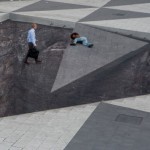 |
The remote volcanic island Rapa Nui, also called Easter Island, is under threat from tourists seeking a particular variety of images taken with the island’s iconic oversized head statues (moai): nose-picking. The trend is one of multiple types of disrespectful actions taken by tourists who are increasingly violating visitor guidelines, putting the statues at risk.
Easter Island has been a World Heritage Site for more than 20 years and is home to the Rapa Nui National Park. According to UCLA archaeologist Jo Anne Van Tilburg, who has been studying the island for almost 40 years, the number of tourists visiting Easter Island has skyrocketed over the past couple of decades.
Van Tilburg said to Newsweek, ‘In 1981 there were only about 2,500 to 3,000 people living on the island, and the yearly count of visitors was about that number. Today, the island hosts over 150,000 tourists per year.’
Many tourists have engaged in disrespectful behavior toward both the island and its residents, including walking over protected land, on top of graves, and climbing the statues. Some tourists violate these rules to get a picture of themselves picking the nose of one the head statues.
The influx of tourists is described as having ‘a hugely negative impact’ on the island’s natural resources and sense of community. Many tourists have engaged in disrespectful behavior toward both the island and its residents, including walking over protected land, on top of graves, and climbing the statues. Some tourists violate these rules to get a picture of themselves picking the nose of one the head statues.
Van Tilburg has called for greater efforts to protect the island and its history, telling Newsweek:
We all need to step up, whether scientist or tourist, and do our fair share to preserve the past. Tourists can study and learn before they travel to the island. They can show proper respect for others. They can remove their egos—and their selfie sticks—from the landscape and learn to appreciate the past.
Sadly, other popular protected destinations also face damage and destruction from tourists, particularly those seeking images to post on Instagram. Last year, for example, New Zealand officials revealed plans to place warning signs around the iconic Lake Wanaka Tree due to the damage it has suffered from people climbing on it.
Articles: Digital Photography Review (dpreview.com)
























You must be logged in to post a comment.